Rolex: An Iconic Brand
The Watches of Switzerland Group | 6 minute read

For a brand as well-known as Rolex, there are still some parts of its esteemed history that remain unknown to many watch collectors. Growing from a London-based watch distributor into the most recognisable luxury horological house in the world in just over a century is no mean feat, and it certainly didn’t happen by accident. Here, we chart its rise to fame under its visionary founder, Hans Wilsdorf — from the turn of the 20th century until today.
From London to Switzerland - and the rest of the world
Rolex began life in London in 1905 under the name of Wilsdorf & Davis Ltd. The aim of its founder, the German-born 24-year-old Hans Wilsdorf, was to sway public opinion on the usefulness of a wristwatch over the more commonly worn pocket watches of the time. To achieve this, he planned to import the most accurate movements from a company called Aegler in Bienne, Switzerland and have them certified — something many thought a fool’s errand. But in 1910, he had a breakthrough when a Rolex became the first wristwatch in the world to receive the Swiss Certificate of Chronometric Precision, granted by the Official Watch Rating Centre in Bienne. In 1914, his small, precise watch movements also received a ‘Class A’ rating from the Kew Observatory in London – a distinction only ever awarded to the most accurate marine chronometers at the time. These days, all Rolex watches come with a Superlative Chronometer rating, which is an in-house certification that guarantees the movement’s accuracy to -2/+2 seconds a day.
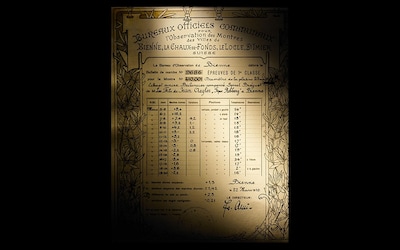
Precision Certificate
By 1914, Wilsdorf had his certified movements, so now he just needed a catchier brand name than Wilsdorf & Davis Ltd. His criteria were that it had to be short enough to fit on a watch dial, plus easy to say and remember in any language. And so, Rolex was born. In Wilsdorf’s words: ‘I tried combining the letters of the alphabet in every possible way. This gave me some hundred names, but none of them felt quite right. One morning, while riding on the upper deck of a horse-drawn omnibus along Cheapside in the City of London, a genie whispered “Rolex” in my ear.’
After the outbreak of the First World War, Wilsdorf decided to move his operations to Geneva, Switzerland, where the brand has been ever since. In 1919, Wilsdorf chose our Northern Goldsmiths store in Newcastle to be the UK’s first ever official Rolex retailer – and you can still visit that store on the corner of Blackett Street, where we’re proudly selling Rolex watches to this day. 2019 also saw the celebration of the 100th anniversary of our partnership with Rolex – you can read more about this story here.
Innovation as an identity
After proving his wristwatches were accurate, Wilsdorf then set about making them tough enough for daily use. By hermetically sealing his movements with a screw-down bezel, case back and crown, he succeeded in creating the first-ever waterproof and dustproof wristwatch, a three-part case that he called the Oyster. When it emerged in 1926, the Oyster was a game-changer for the industry in many ways, and today’s Oyster case is a signature feature throughout Rolex’s collections.
To keep the watch waterproof, the crown had to be screwed in at all times, which presented an issue for a manual-winding watch. Wilsdorf turned to his movement maker, Aegler, which came up with a module made from a free swinging rotor that it could place over its super-accurate manual movements to make them automatic. Thus the Perpetual Oyster was born, and now nearly every watch brand in the world uses this system to make automatic watches.

Precision Certificate
The Oyster’s much-loved fluted bezel also descends from the first-generation Oyster, when the bezel had to be screwed tightly to the case to guarantee waterproofing. Though its function is no longer needed, the fluting has endured as an iconic part of Rolex’s design language. The now two-part Oyster case is guaranteed to be waterproof to depths of 100 metres. This is thanks to a middle case crafted from a solid block of corrosion-resistant Oystersteel and a fluted case back that’s hermetically screwed down by a special tool only used by Rolex watchmakers. Its winding crown is also fitted with a Rolex-patented Twinlock double waterproofness system.
Exploration and world-firsts
Wilsdorf was so confident in his creations that he decided to test them in the harshest environments. In 1927, he gave one of the first Oyster watches to a young British professional swimmer, Mercedes Gleitze, whose goal was to swim the English Channel. The swim lasted 10 hours and the Rolex watch, which was tied to a ribbon around her neck, survived without a mark or drop of water entering the case.
This feat led to the birth of one of Wilsdorf’s greatest concepts: the Rolex Testimonee. Wilsdorf soon realised extraordinary people at the top of their game were able to take Rolex creations to places no human, let alone wristwatch, had ever been — testing them to the extreme. In 1935, the legendary Sir Malcolm Campbell became the first human to set a land-speed record of over 300 miles per hour at the wheel of Bluebird; in 1947, the US pilot Chuck Yeager broke the sound barrier while test-piloting the X-1; and in 1953, Sir Edmund Hillary and Tenzing Norgay became the first humans to summit Mount Everest. Present for all of these incredible feats was, of course, a Rolex Oyster — proving the functional watch could withstand extreme acceleration and altitude.
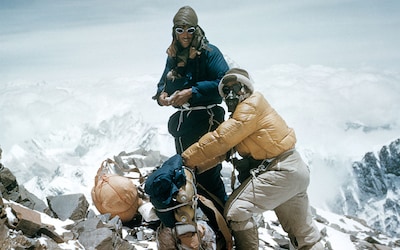
Sir Edmund Hillary and Tenzing Norgay
The 1950s and 60s: the birth of the Professionals
By the 1950s, Rolex’s reputation for creating hard-wearing tool watches was taking shape, and the decade saw the introduction of some of the brand’s most popular watches of today. These include the Oyster Perpetual Explorer, worn at the summit of Everest, and the the Submariner, which was the world’s first divers’ watch waterproof to a depth of 100 metres and featured a graduated rotating bezel to help calculate dive time. Both were launched in 1953.

The First Explorer
Rolex recognised the dawn of the jet age with 1955’s GMT-Master. Featuring an unmistakable red and blue 24-hour bezel and GMT hand, the watch was seen on the wrist of every Pan Am pilot of the time. A year later, Rolex introduced the Oyster Perpetual Day-Date, the first wristwatch to display the date and day of the week spelt out in full in a window on the dial. A follow-up to the 1945 Datejust, its high-profile wearers included John F. Kennedy and Lyndon B. Johnson, which quickly led to it being nicknamed ‘the President’s Watch’. Rolex also launched the Oyster Perpetual Milgauss in 1956: capable of withstanding magnetic fields of up to 1,000 gauss, it was worn by the scientists of the European Organisation for Nuclear Research \(CERN\) in Geneva.
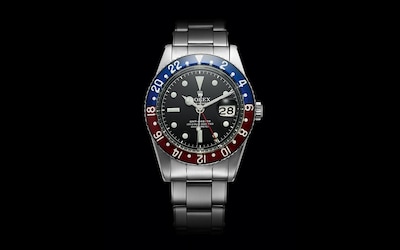
First GMT-Master
Wilsdorf died in 1960, at the age of 79, with Rolex’s star firmly in the ascendant. It had gone from retailing timepieces in London to creating some of the most ingenious wristwatches in the world. And, despite Wilsdorf’s passing, the innovation continued apace: in 1963, Rolex unveiled the Cosmograph Daytona, which allowed its wearers to measure speed through the use of the tachymeter on the bezel. Its legendary status was cemented when it was worn by actor and racing enthusiast, Paul Newman.
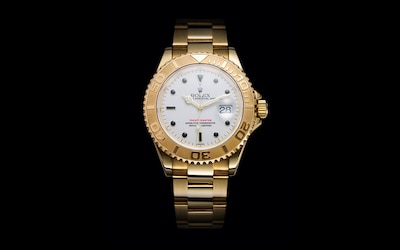
First Yacht-Master
Modern times
Today, staying true to form, Rolex continues to innovate and evolve. Its most recent new models include the 1992 Yacht-Master and the 2012 Sky-Dweller, the latter featuring a dual time zone and annual calendar function. While that watch looked to the stars, Rolex also sent a watch to the deepest point on Earth when it equipped the film-maker James Cameron with a Rolex Oyster Perpetual Rolex Deepsea Challenge for his solo dive to the bottom of the Mariana Trench. This extraordinary diving watch was certified waterproof up to 12,000 metres, and was entirely designed and built by Rolex to resist the extreme pressure at the deepest point of the ocean.
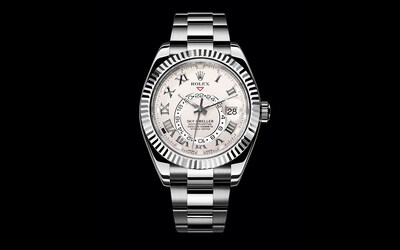
Rolex Sky-Dweller
Rolex has also been busy innovating the inside of its watches. In 2014, it introduced the pioneering Syloxi hairspring, which first featured in its calibre 2236. This in-house developed silicon hairspring is impervious to magnetic fields and runs ten times more accurately than a traditional ferromagnetic hairspring, even when exposed to shocks.
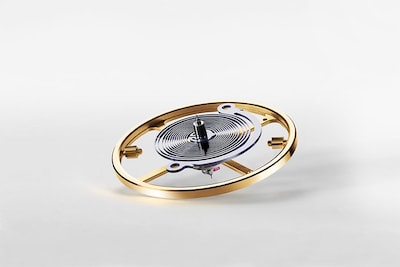
Syloxi Hairspring
Today, a century after Wilsdorf first chose our Northern Goldsmiths store to be the UK’s first Rolex stockist, our relationship with the esteemed brand is stronger than ever.
You can listen to our podcast featuring James Dowling, who is one of the most respected authorities in horology, discussing the history of the brand on Calibre Online here.
